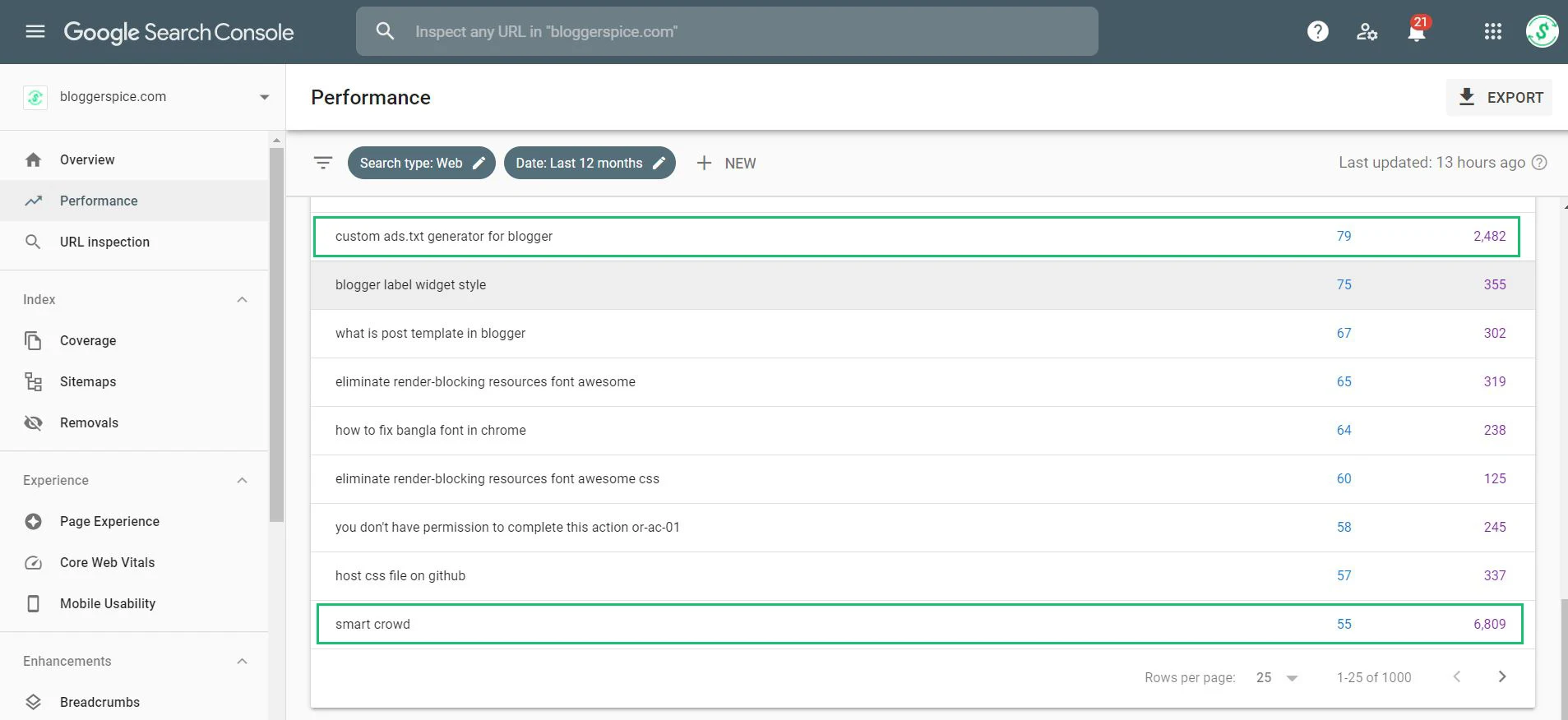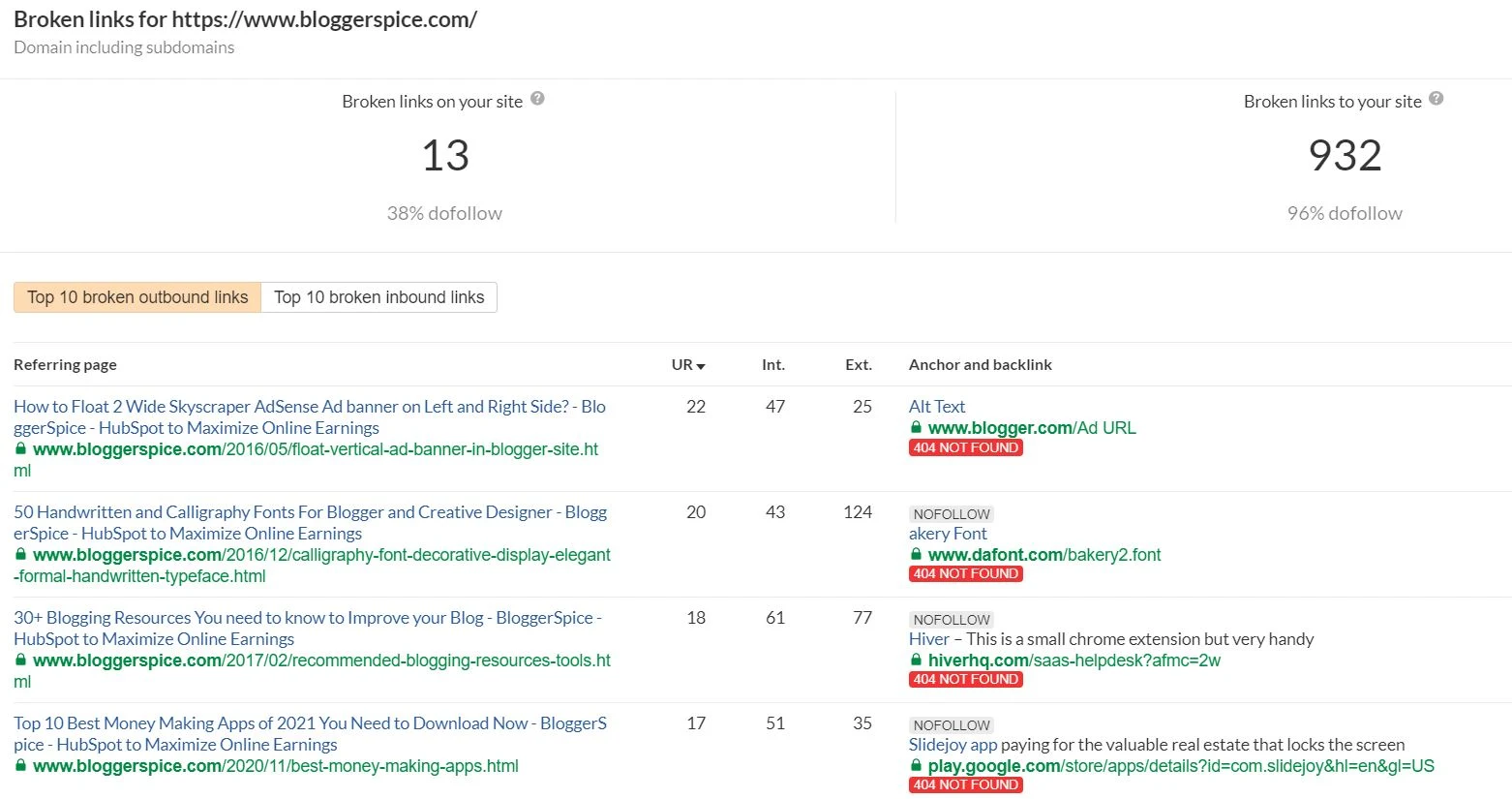How to Update Old Blog Posts to Boost SEO Ranking?
While most websites focus on creating new content to attract visitors, the truth is that upgrading content that is already on your site might yield better results.
It's one of the most important content marketing strategies for increasing organic traffic. However, many people fail to update outdated content. In this article, you'll learn how to republish old blog posts for increased organic traffic with easy steps.
Not every blog article you write will be found and rank in search results. It's not always possible to get things right on the first go, even if you've done keyword research and created excellent content.
If you've been blogging for a while, you're probably aware that you have a pile of older entries that haven't been updated in the last 2-3 years. However, even if you've apparently forgotten about those old articles, your target audience is still finding them via Google searches or other referral sources.

When new visitors arrive on your site and read an old piece that is outdated, stale or contains information that is no longer relevant, your bounce rate will rise, your rankings will affect, and your content marketing approach will be ruined.
In this post, I'll explain why you should update old content and how to do so effectively.
What's the point of updating older blog posts?
Your website's content is a reflection of your brand. You can provide more important information to users and boost search engine visibility by enhancing and optimizing the existing content on your website.
Furthermore, upgrading some of your older, but high-performing posts can extend the life of the content while also increasing website traffic. If you've observed that some of your evergreen blog articles that used to attract a lot of organic traffic are now dropping in search engine results, it's possible that fresh and updated posts have taken their place.
Google's May 2020 Core Update also prefers websites that update outdated content often.
Finally, updating an existing post takes less time and effort than creating a new one from scratch. While you should always be creating new and original content, upgrading relevant older posts can help you save time while still maintaining a regular posting schedule.
Benefits of Updating Older Blog Posts
Updates also signal the Google algorithm that your content is a superior resource, and depending on a few factors, they can boost a blog post's traffic by up to 70%.

1. You Already Have a High Domain Authority on Your Blog.
A Domain Authority score indicates how well a page will rank on search engine results pages.
A score of 40 to 50 is regarded as average, while a score of 60 or higher is considered exceptional.
2. Your Blog Receives Consistent Visitors.
What constitutes "steady" varies depending on your industry and how important traffic is to you. The typical blog receives 130 page views per day, or 4,000 page views per month, as a comparison. We were aware that our own blog had reached a constant level of visitors.
3. The Topics On Your Blog are Evergreen.
The term "evergreen" refers to something that retains its value over time and is not dependent on the passing of time. “How to increase SEO,” for example, is an evergreen topic, whereas "Last month's Google updates" is not.
If your blog is having trouble doing those three things, you should first work on achieving those objectives before updating and republishing your blog content.
What Criteria Need to use to Determine which Posts Should be Updated?
1. Make Sure it’s Not a New Page
It's pointless to repost articles that have already been published recently. It takes time for content to gain backlinks and for Google to recognize where they belong in the search results.
As a result, we don't normally republish posts unless they've been on the site for at least a year.
By looking at the publish date, you may immediately determine how old your post is.
2. Links to High-quality Pages
Look for posts that have a lot of strong, high-quality backlinks from other authority websites but aren't ranking highly in the search results. All you have to do to update these posts is include the essential keywords in your post to get a boost in page visits.
3. Pages With a High Traffic Volume
The simplest strategy to witness a jump in internet traffic is to update and refresh pages that already receive the most traffic on your website. You can check it through Google Analytics without any cost.Step 1: Go to Google Analytics to find out which pages on your website are the most popular.
Step 2: Select ‘Behavior’ - > ‘Site Content’ -> and click ‘All Pages’ from the left panel.

Step 3: To see the list of pages with the most views, select a time period of 12 months or more.
4. Pages With a Significant Proportion of Keyword Impressions But Low Search Engine Rankings

Look for keyword inquiries that have a lot of impressions but low rankings and click-through rates (CTR) in Google Search Console.
Step 1: Visit Google Search Console
Step 2: Click the' Performance' tab from the left menu.
Step 3: Now select data for the last 12 months.
Concentrate on keywords that rank in the 6-20 range on your website pages. Find out which pages are showing up for those keywords and make changes to those pages.
5. Pages that Have Experienced a Significant Drop in Organic Traffic
Analyse the traffic to your website's most popular pages over the last 12 months to discover topics that have abruptly lost organic traffic. The reasons for rapid and steep declines can vary depending on the post.
You may utilize the Google Analytics dashboard to identify posts that are losing traffic, and then use Search Console to see if those pages have lately lost rankings for relevant keywords.
The above 5 primary pages on your website should be updated.
Update and republishing old blog posts: Best practices with 10 Actionable Steps
You won’t be able to get the best result just by including a new one or two paragraphs on your old blog article. In fact, you'll need to do a lot more to get the best results in terms of improved ranking, organic traffic, engagement, and conversion.
Here are 10 steps for updating outdated content in a way that boosts your SEO and conversions.
1. Maintain the Same URL.
Rather than publishing the updated post as a new article, which may cause search engines to believe it contains duplicate information, simply edit the existing post and keep the URL the same. To republish the post, write the new version in a different document and copy/paste it over the original.
2. Find Appropriate and New Keywords to Target.
In the case of old articles, you should know which keywords have generated the greatest impressions and traffic for them. Additionally, you can use LSI keywords to optimize your content.
You should concentrate on those keywords and avoid those that haven't contributed much to the content in terms of organic search.
Incorporate these keywords into your headlines, Meta tags, subheadings, and alt-texts.
It's possible that a post you've already published is ranking for keywords you didn't expect. To improve your keyword rankings, find those keywords and strategically insert them in your article. It's ideal to use keywords with low search volumes because they'll be easier to rank for.
3. Check for Accuracy in the Content.
If further information is required for that blog article, include it.
Remove everything that has to be eliminated - perhaps they've become redundant.

Expend the content through the eyes of your core audience. Is it satisfactory to you? Have you gotten the intended result?
You shouldn't just keep stuff updated for the sake of keeping it up to date. Instead, concentrate on blog entries that have gone stale or contain old material. When amending postings, make sure all of the content is accurate before deciding whether sections should be deleted, updated, or replaced.
Observing how other websites approach the same topic and figuring out how you can do it better is a useful exercise. Using a discovery tool like Content Studio, you may track content by keywords, topics, and sources. You may look at the most popular pages to see which ones are getting the most attention.
4. Include New Information with Internal Links.
Opinions are wonderful. Okay, lectures. however, the bona fide game is in the facts that convince the audience.
When you present hard numbers, it lends credence to whatever you're saying. People would have more faith in you. This would increase the value and retention of your brand.
As a result, add more data to confidently communicate your tips, advice, and opinions.
If you're rewriting an older blog post from more than two years ago, it's possible that it only has internal backlinks to content that was published before the article. You can utilize this time to add internal links to freshly published content to improve the SEO performance of your website while refreshing your post.
5. Look for Any Links that Aren't Working.
You should check for any broken or erroneous links in the content before adding new links. All of the links in your content should work and take your readers to the correct location.
Broken links are not only inconvenient for users, but they are also a search engine red flag. To rapidly discover any broken links on your website, utilize a broken link analyzer like Ahrefs.

6. Embed New Video tutorials or Upload Screenshots
Adding new media to an existing article is one of the most effective methods to update it. You can upload updated screenshots or even videos that are relevant to the blog's content or keyword.
In fact, by including videos in blog posts, you may extend the length of time readers spend on your site, which can assist improve SEO. For increased interaction, you may make a video version of one of your high-performing posts and upload it to the website.
7. Replace the Cover Image with a New One.
Change the post's featured image and replace it with a new one.A new cover image reflects the expanded scope of your content, including what fresh information you've added, which keywords you're focusing on, and how the title has evolved.
8. Make your Headline More Appealing.
Change the headline of your blog entries to make them more engaging, similar to the previous advice.
Why not make it a ‘how-to' instead? Why not mention the year if it doesn't already have one?
If there aren't any emotive words in it, or if it doesn't involve "you" or "your," then include them. Try to elicit any of these feelings.
You can use keyword analysis tools to discovered high-value keywords. See what comes up when you Google it. Examine the headlines used by your competition. Take some ideas from them.
9. For More Transparency, Including an Editor's Note
If you're going to modify an existing blog article, put a tiny editor's note at the end just to be transparent. This will be especially useful for popular blog posts that already have a lot of comments and views.
Your readers may be perplexed by the new information as well as the post's old date. You can include the date and rationale for the modifications in the message.
10. Add the Most Effective Call-to-action
It's called renovating and updating when you're merely making minor modifications to your existing material to improve its worth.
Content repurposing, on the other hand, is when you change the content's overall purpose.
You can re-define the CTA for better results based on the responses and how well this old post performed. This may also necessitate changing the tone of the content.
At the end of the day, the purpose of any piece of content is to generate results. If your last blog article didn't deliver the desired results, it's a good idea to improve the call to action.
Last but Not Least
By merely putting a new date to the old text, don't make it a compulsion to update it. It should be updated to provide more value to you and your audience.
When revising existing posts for SEO purposes, make sure they are optimized for the keywords you want to target. You might not be able to see any apparent results either.
As a result, you should do a keyword assessment to determine which keywords should be included in each post, and then develop a blog republishing strategy based on the results.

Post a Comment